If you are interested in the history of Jews in China, you can’t miss our in-depth Jewish tour to China. This Jewish tour, which lasts 10 days, includes three major parts. The first part is the Jewish Tour from Harbin which is the second home for Jews. In Harbin, you will visit the Jewish Community where you can trace the history of Jews. You will also visit the Harbin Jewish Cemetery where you can mourn for the dead. The second part is the Kaifeng Jewish tour. When you arrive in Kaifeng, you will visit the Nan Jiaojing Hutong which is the living area for Jews who immigrated to this city. Before Jewish Tour to Shanghai, you will visit the Longmen Grottoes where you can visit this Buddhist statue to appreciate its beauty and magnificence in person. The third part is the Shanghai Jewish tour. In Shanghai, you will visit the Shanghai Jewish Refugees Museum where you can see many precious historic materials, books, and photos about the history of Jews. You will also visit Huoshan Park where Jewish refugees can gather and rest. After this in-depth Jewish tour to China, I believe you will have a full understanding of the history of Jews in China. Don’t hesitate and just start this in-depth Jewish tour with us.

Today you will arrive in Harbin. Our trained tour guide will be waiting for you at the airport, holding your name sign. And then you will be transferred to a cozy hotel for a good rest. If you have any questions, please call our tour guide who is always ready to help you.
Now, congratulate you for formally beginning your Harbin Jewish tour. After a hearty breakfast, you will visit the Jewish Community, the largest and most complete one in China. For the Jewish people leaving their motherland, they had nothing to rely on except the community when they were on the tramp. So visiting the Jewish Community is indispensable in this tour. Formed in 1903, the Jewish Community functioned as a social organization, providing services for Jews. A set of facilities, like schools, hospitals, stores, synagogues, banks and retirement houses was built. Among them, the Old and New Synagogues which were built in 1907 and 1918 respectively, are the most important. The two synagogues offered places to the Jewish spiritual leader, Rabbi, and the Jewish Religious Association to unite believers. As a vital place for Jews to hold religious ceremonies, the synagogue plays a big part in the life of Jews. You can’t miss the two places during your Harbin Jewish tour.
After lunch, you will visit the Harbin Jewish Cemetery, the largest and best-protected Jewish cemetery in the Far East. It was built in 1903 in Tainan Street downtown and was moved to the Huangshan Mountain in the eastern suburb in 1958 for better management. As an important part of Jewish history and culture, this cemetery is the tangible evidence that Jews lived in Harbin and bears witness to the special treatment given to the Jews by the Chinese people. The foundation of this cemetery demonstrates the Chinese people’s friendliness to the Jews. Over recent years, many Jews and their children from other countries, including Israel, the United States, Russia, Australia, Britain, Poland, as well as scholars of Jewish studies around the world, have come to the cemetery to mourn for the dead. Ehud Olmert, the former Prime Minister of Israel, visited the Harbin Jewish Cemetery in 2004. His grandfather lived in Harbin from 1917 until his death. After his death, he chose to be buried in Harbin Jewish Cemetery. Moreover, Ehud Olmert’s father was born in Harbin, and returned to Israel with the support of a Chinese friend to participate in the founding of Israel. His father even spoke Chinese to Ehud Olmert in the last minutes of his life. You will learn more stories about Jews in Harbin.
Free Time Suggestion: Are you a gourmet enthusiast or a shopping lover? If your answer is yes, you could go to Harbin Central Street. Central Street, with a length of 1,450 meters, has many European-style buildings, such as Renaissance and Baroque. As the most prosperous commercial pedestrian street in Harbin, it attracts innumerable people. Here, as a shopping lover, you can wander around various department stores. What’s more, as a gourmet enthusiast, tasting Harbin sausage (a kind of smoked pork sausage), lie-ba (a kind of Russian-style bread) and the Modern ice lolly should be included in your to-do list. You can also go to the Saint Sophia Cathedral, the landmark of Harbin, to take photos.


 Zhengzhou
Zhengzhou Today your Jewish tour in Harbin is over. After breakfast, you will have enough time to pack your bags in the hotel. When you are ready, our tour guide will pick you up, and then you’ll be transferred to the airport and take the estimated flight CZ9502 15:05/17:55 to Zhengzhou, the capital city of Henan Province in the middle of China. As soon as you arrive in Zhengzhou, our local tour guide will take you to the hotel. All you need to do is take a good break, so you will be vigorous in your tour tomorrow.
 Kaifeng
Kaifeng Today we will drive 78 kilometers northeast for about 1.2 hours to Kaifeng, a prefecture-level city in Henan Province. So when you finish your breakfast, please bring your luggage to the lobby of the hotel on time. Our tour guide will be waiting for you to take you to Kaifeng. The first stop of our Kaifeng Jewish tour is Nan Jiaojing Hutong. It is located in the east of Kaifeng and once served as the living area for Jews who immigrated to this city. Around the 10th century AD, lots of Jews from Persia arrived in Kaifeng which was the capital city of the Northern Song Dynasty (960-1127) at the time. These people paid tribute to the then emperor, which delighted this emperor and brought him a sense of satisfaction. Therefore, the emperor allowed these Jews to settle in Kaifeng and maintain their religious beliefs and customs. For the Jews who were expelled from other regions and countries, it was a precious chance. Nowadays, the Nan Jiaojing Hutong has been the epitome of the life of the Jews in Kaifeng.
After visiting the Nan Jiaojing Hutong, our tour guide will take you to lunch. And in the afternoon, you will visit the Kaifeng Museum (closed each Monday). Kaifeng Museum, whose original site was in Sansheng Street, now is located in the New Area of Kaifeng. It is a local comprehensive museum integrating exhibitions, collection and protection. It has a total construction area of 54,286 square meters and has four exhibition halls. Since its establishment, it has held hundreds of exhibitions, which have promoted the history and culture of the city. In the Kaifeng Museum, there are about 80,000 cultural relics including potteries, porcelains, bronzes, calligraphy works, and paintings. These precious cultural relics prove that Kaifeng is a culturally and historically important city. Let us follow them to explore the unique charm of the city.

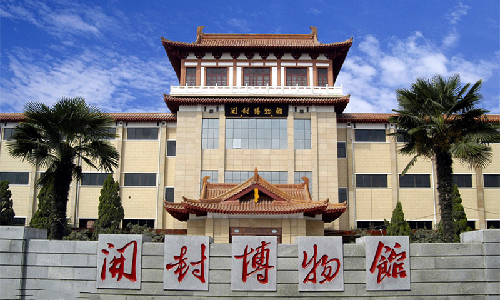
 Luoyang
Luoyang Today we will drive southwest for about 2.3 hours to the Shaolin Temple, over 150 kilometers away from Kaifeng. Shaolin Temple, which was built in 495, is located at the foot of Wuru Peak of the Mount Song in Dengfeng (a prefecture-level city in Zhengzhou). If you are a Kung Fu lover, you can’t miss this place. As a prestigious Buddhist temple, it is also the home of Shaolin Kung Fu, which is the largest sect of the Chinese martial arts system. After experiencing Shaolin Kung Fu, you will visit Pagoda Forest outside the Shaolin Temple. Pagoda Forest refers to the tombs of eminent monks presiding over the Shaolin Temple. As the largest one in China, this pagoda forest covers an area of more than 21,000 square meters and preserves 241 tomb pagodas from the Tang Dynasty (618-907) to the Qing Dynasty (1636-1912). There are many types of pagodas, including brick-built and stone-carved. Therefore, it is also a good place to appreciate various pagoda architectures.
When you finish your tour of the Shaolin Temple, we will drive west for about 1.5 hours to Luoyang, about 55 kilometers away from Shaolin Temple. After arriving in Luoyang, you will be transferred to the hotel and check in.

 Shanghai
Shanghai Our tour guide will wait for you at the hotel lobby, and then take you to the Longmen Grottoes in the Luolong District. Longmen Grottoes is a stone-carved art treasure museum, whose building started in the Northern Wei Dynasty (386-534) and ended in the Qing Dynasty. As a paradise of Buddhist culture, it has about 10,000 Buddhist statues. And among these Buddhist statues, Lushena Buddha, which was built in 672, is the most famous and tallest one. It is said that based on the appearance of Wuzetian (the only female emperor in China), this Buddhist statue was designed. This Buddhist statue, whose head is 4 meters high and ears are 1.9 meters long, is 17.14 meters high in total. It has round chubby cheeks, wavy hair, crescent-moon-shaped eyebrows, and beautiful eyes. With a gentle smile, it looks like a wise and kind middle-aged woman. Anyone who visits the Longmen Grottoes will be amazed by the beauty of the Buddha.
After visiting Longmen Grottoes, we will drive you to the airport. Then you will take the estimated flight MU5390 16:50/18:45 to Shanghai. When you arrive in Shanghai, our local tour guide will pick you up at the airport and drive you to the hotel.
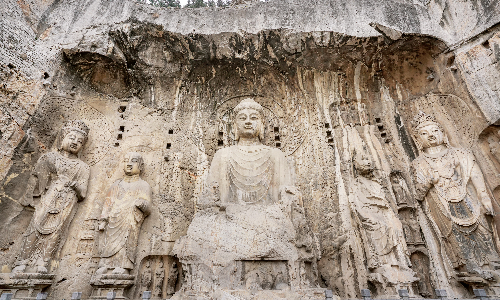
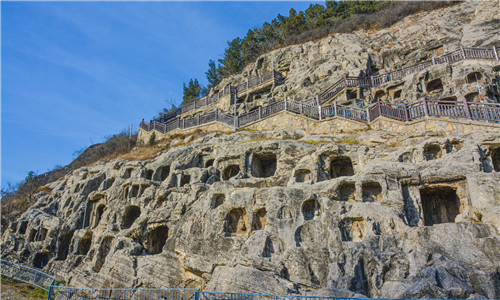
Today you will start your tour in Shanghai, an international metropolis in eastern China. After breakfast, you will visit the Yu Garden (closed each Monday) in the Huangpu District. Yu Garden, covering an area of more than 20,000 square meters, is a famous classical garden in southern China. Its construction began in 1559 and lasted over 20 years. As a private garden, Yu Garden was owned by Pan Yunduan, who was a government official in the Ming Dynasty (1368-1644). To provide his aging parents with a serene and beautiful place to enjoy their twilight years, Pan Yunduan built this garden. Here you can wander around pavilions and admire old trees, including a 300-year-old wisteria and a 200-year-old white bark pine.
After visiting the tranquil garden, you will visit the Jade Buddha Temple in the Anyuan Road, Putuo District. This temple, which was built in 1882, was named after the two Jade Buddha statues in this temple. It is an imitation of the temple building of the Song Dynasty (960-1279), with a regular layout, covering an area of about 2 acres. When it comes to the Jade Buddha Temple, we have to talk about its related cultural exchange. This temple has received many foreign tourists, including government officials and people from all walks of life in different countries. For example, in 1984, Mrs. Reagan Nancy (American First Lady in 1981-1989) visited this temple and worshipped the Buddha here. Therefore, we can say that the Jade Buddha Temple plays an important role in the cultural exchange between China and other countries.
After lunch, you will visit the Shanghai Oriental Pearl TV Tower in the Pudong New Area. As one of the landmark buildings in Shanghai, it was built in 1994, with a total height of 468 meters. And it integrates multiple functions such as sightseeing, catering, shopping and entertainment, historical exhibitions, radio and television launches. There is a translucent sightseeing gallery, with a perimeter of 150 meters, located in the 259-meter-high sphere of the Shanghai Oriental Pearl TV Tower. Its floor and walls are all made of glass. When you stand on this high and translucent sightseeing gallery, you will have a panoramic view of Shanghai.
Your next stop is The Bund in the Huangpu District, which is 1.5 kilometers long. The Bund, whose architectural complex is rarer in the world, is the symbol of Shanghai. You will see buildings with many classical architectural styles here, including French Classical, Gothic, Baroque. When you arrive in The Bund, you could visit the Peace Hotel, whose original name was Huamao Hotel. This Gothic-style hotel was built in 1929. As the highest building in The Bund, Peace Hotel, which has 12 floors, is 77 meters high. This hotel received many celebrities, such as the General Marshall of the United States and playwright Noel Coward. Now you can also have a chance to visit the Peace Hotel and experience its luxury.
Today your last stop is Nanjing Road. As one of the busiest commercial streets, you could buy anything you want. There are luxury brands, such as Rolex, Louis Vuitton, and Coach, as well as China time-honored brands, such as Zhangxiaoquan(selling scissors), Shendacheng(selling local dim sum), and Wuliangcai(selling glasses). Enjoy your shopping time!


Today, your first destination is the Shanghai Jewish Refugees Museum (closed each Monday) in the Hongkou District. The Shanghai Jewish Refugees Museum was built to commemorate Shanghai for accepting nearly 30,000 Jewish refugees from Europe. Over eighty years ago, Jews fled to Shanghai because of the slaughter. At the time, Shanghai, like the “Noah’s Ark”, protected these Jews and offered them a peaceful land. This museum has about 1,000 exhibits and preserves tens of thousands of precious videos, books, and photos. So far, tourists from more than 116 countries have visited this museum.
Then we will visit Huoshan Park, located in the southeast of the Hongkou District. Located in the center of the Jewish refugee settlement during World War II, Huoshan Park was once a place for refugees to gather and rest. What’s more, the late Prime Minister of Israel Rabin, his parents were buried in this park. Built in 1917, it covers an area of 3,700 square meters. The southern part of the park is a children’s playground, with seesaws, slides, and other amusement facilities. The western of the park is a recreational place for the elderly. The main tourist attraction is the Jewish refugee shelter. With the support of the Hongkou District People’s Government, a nameplate was funded and renovated by the Israeli government and companies here. This nameplate reads in Chinese and English: To thank the people of Shanghai for accepting Jewish refugees before and during World War II.
After lunch, we will drive southeast for about 1.2 hours to the Zhujiajiao Ancient Town, which is about 63 kilometers away from Huoshan Park. Zhujiajiao Ancient Town, whose total area is about 136 square kilometers, is located in the Qingpu District. It is one of the most beautiful water towns in southern China. One of the business cards of this town is the old post office of the Qing Dynasty. This post office was built in 1903, covering an area of about 100 square meters. After renovation, the post office maintains the original formal layout, showing the long history of China's postal industry. You can wear the costumes of the Qing Dynasty postman to take photos here, which will be an extraordinary and interesting experience for you.
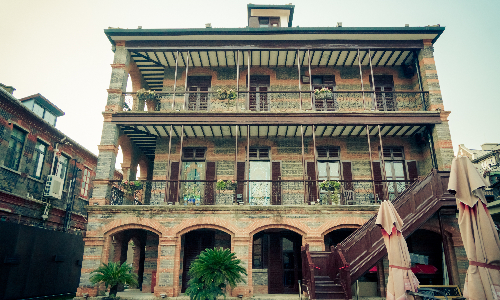
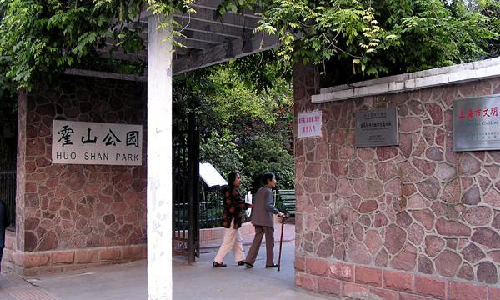
 Suzhou
Suzhou Shanghai
Shanghai Today we will drive northwest for about 1.3 hours (about 100 kilometers) to Suzhou, a prefecture-level city of Jiangsu Province in eastern China. In the morning, you will visit Tiger Hill, located in the northwest corner of Suzhou. As an important tourist attraction, Tiger Hill, with a long history of more than 2500 years, has a total area of 100 hectares. During your visit, you will see a spring on the hill, named Hanhan Spring. The Hanhan Spring has a history of over 1,400 years. Legend has it that Hanhan was a blind boy, who was abandoned by his parents. He was adopted by an abbot in the mountain. There was no drinking water on the mountain, so he needed to fetch water from the river at the foot of the mountain every day. One day, when he was on the way to fetch water, he heard a faint sound of running water. Then he dug down at the source of the sound. He had beendigging here for a day and a night, and finally, spring water emerged from the ground. From then on, he no longer had to run down the mountain to fetch water. The abbot named this spring Hanhan Spring.
After visiting Tiger Hill, you will walk to Shantang Street. Shantang Street, with a total length of about 3,600 meters, was built by Bai Juyi, a famous poet of the Tang Dynasty. When serving as the governor of Suzhou, to facilitate local transportation, he summoned local officials to build roads around the mountains and dig a Shantang River. The street built next to the Shantang River is the Shantang Street. Today along Shantang Street, there are many snack bars where you can taste delicious food. For example, you can eat pan-fried pork buns and boiled glutinous rice balls. Enjoy the delicacies of Suzhou here!
In the afternoon, you will visit the Lingering Garden. It is a large-scale classical private garden in China, covering an area of 23,300 square meters. There are three owners in the history of Lingering Garden, and I would like to introduce the first one to you. The first owner Xu Taishi was once a senior official as well as an expert on architecture in Beijing. Due to his outstanding talents, he was responsible for designing and building the palace where the empress lived in the Forbidden City, and was awarded by the emperor. Later, because of being framed by bad guys, he was demoted to the governor of Suzhou. The Lingering Garden is the residence he built for himself in Suzhou. Today we can appreciate the classical beauty of the Lingering Garden.
Then we will visit the Master of Nets Garden, which was built in the Southern Song Dynasty (1127-1279). As a typical private garden that covers an area of about 5,000 square meters, the Master of Nets Garden, is well known for its exquisiteness. One of its main buildings is the Peony Study. There is an interesting story about it. In 1978, people from the Metropolitan Museum of Art in New York visited Suzhou. They were fascinated by the Master of Nets Garden and decided to build a similar building in their museum. Based on the architecture of the Peony Study, a classical garden appeared in the Metropolitan Museum of Art, making this Chinese garden famous in the world.
Today your tour in Suzhou is over. Our local tour guide will drive you to Shanghai. After arriving in Shanghai, you will take a good rest in the hotel to relieve your fatigue.

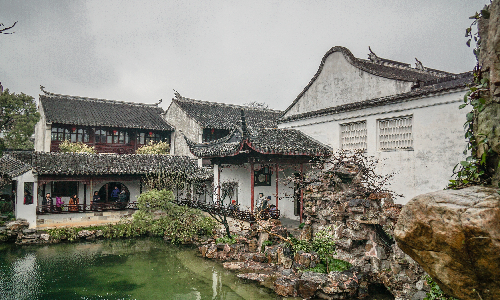
Today your 10-day Jewish tour in China is over. Our tour guide will pick you up at the hotel and then you will be transferred to the airport for your flight back to your sweet home. We will look forward to seeing you again in China.
Editor: Deng Kaili
Proofreader: Summer Hou
| City | Five Star hotel list | Four Star hotel list |
|---|---|---|
| Harbin | Shangri-La Songbei, Harbin | Mercure Harbin Institute Of Technology |
| Zhengzhou | Yuda Palace Hotel | Holiday Inn Express Zhengzhou Zhengdong |
| Kaifeng | Sheraton Kaifeng | Pullman Kaifeng Jianye |
| Luoyang | Lee Royal Hotel Mudu | Xinyuan International Hotel |
| Shanghai | Ocean Hotel Shanghai | Courtyard by Marriott Shanghai Central |
 |
![]() About your child or infant, please contact us for a discounted price.
About your child or infant, please contact us for a discounted price.



We started with a few days in Beijing & ended in Shanghai, from where we visited the Forbidden City and Great Wall. In between we visited Terra Cotta Warriors Museum, Panda Base, Shanghai Disneyland.

We had a wonderful holiday in China which will remain long in the memory. China is a breathtakingly beautiful country full of splendid temples and palaces, mountains and rivers, peaceful rural scenes and bustling shopping streets.
 QUICK ENQUIRY
QUICK ENQUIRY